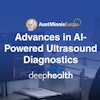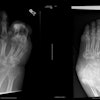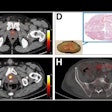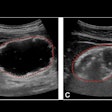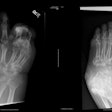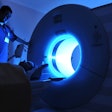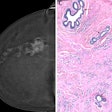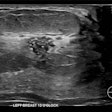
NEW YORK (Reuters Health), Jun 29 - Nephropathy is a frequent complication following diagnostic and interventional coronary procedures in which contrast medium is used. In the New England Journal of Medicine for June 29th, physicians in Italy report that prophylactic high-dose N-acetylcysteine reduces the rates of contrast-medium-induced nephropathy and mortality compared with placebo.
N-acetylcysteine is a scavenger of oxygen free radicals that counteracts dye-induced renal vasoconstriction and inhibits platelet aggregation. Although its effects are well-documented, this is the first trial evaluating its use in patients undergoing primary angioplasty, lead researcher Dr. Giancarlo Marenzi and his associates maintain.
They conducted a controlled trial involving patients with ST-segment elevation acute MI who underwent primary angioplasty at their institution, the Centro Cardiologico Monzino in Milan. A total of 116 patients were randomly assigned to receive a standard dose of N-acetylcysteine, 119 to a high dose of N-acetylcysteine, and 119 to placebo.
The standard dose of N-acetylcysteine was 600 mg as an IV bolus followed by 500 mg orally twice a day for two days. The high dose was an IV bolus of 1200 mg and 1200 mg orally twice daily for two days. An IV saline infusion was used as the placebo treatment.
Contrast-medium-induced nephropathy occurred in 66 patients -- 33% in the placebo group, 15% in the standard-dose group, and 8% in the high-dose group (p < 0.001).
Also, in-hospital mortality was 26% among patients who developed nephropathy versus 1.4% of those without (p < 0.001).
After adjusting for demographics, baseline serum creatinine, volume of contrast medium, and left ventricular function, the odds ratio for development of contrast-medium-induced nephropathy for placebo compared with standard-dose N-acetylcysteine was 2.60 (p = 0.007). When compared with the high-dose group, the odds ratio was 5.78 (p < 0.001).
The occurrence rate of the combined endpoint of death, acute renal failure, or need for mechanical ventilation in the three groups was 18%, 7% and 5% (p = 0.002).
"Notably, N-acetylcysteine seemed to help prevent contrast-medium-induced nephropathy in patients with normal renal function and in those with reduced renal function, as well as in those with mildly or severely reduced left ventricular function," Dr. Marenzi's team reports.
They note that further studies, including those designed to evaluate the extrarenal effects of N-acetylcysteine, will be required before any definitive conclusions can be made.
Last Updated: 2006-06-28 17:00:18 -0400 (Reuters Health)
N Engl J Med 2006;354:2773-2782.
Related Reading
Assessing patient risk will help prevent contrast-induced nephropathy, June 15, 2006
Copyright © 2006 Reuters Limited. All rights reserved. Republication or redistribution of Reuters content, including by framing or similar means, is expressly prohibited without the prior written consent of Reuters. Reuters shall not be liable for any errors or delays in the content, or for any actions taken in reliance thereon. Reuters and the Reuters sphere logo are registered trademarks and trademarks of the Reuters group of companies around the world.

